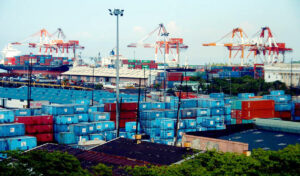Business groups back removal of PPA’s commercial functions

LOCAL BUSINESS GROUPS are supporting a proposed law that seeks to remove the Philippine Ports Authority’s (PPA) revenue-generating function, saying this “problematic mandate” has led to a steady rise in cargo-handling rates that affected the country’s competitiveness.
The Philippine Chamber of Commerce and Industry (PCCI), Philippine Exporters Confederation, Inc. (Philexport), and Supply Chain Management Association of the Philippines (SCMAP) said that they support House Bill (HB) No. 1400 or the proposed Philippine Ports Corp. Act, which seeks to “decouple” the PPA’s regulatory and commercial functions and convert the agency into the Philippine Ports Corp. (Philports).
The statement, released on Thursday, was signed by PCCI President George T. Barcelon, Philexport President Sergio R. Ortiz-Luis, Jr., and SCMAP President Pierre Carlo Curay.
The business groups said industry stakeholders have blamed the steady rise in cargo-handling rates on the PPA, which currently functions as a regulatory body and a public port developer and operator. The high rates have “eroded the country’s competitiveness,” they said.
“The Philippines is said to have the highest cargo handling cost in ASEAN (Association of Southeast Asian Nations), which undermines its global competitiveness,” the business groups said.
Filed by Bagong Henerasyon Party-list Rep. Bernadette Herrera-Dy, HB 1400 seeks to transfer the regulatory powers of the PPA to the Maritime Industry Authority (MARINA).
Under the bill, the Philports will be turned into a government-owned and -controlled corporation under the Department of Transportation. It will be tasked to own, develop, manage, and operate public ports within the old PPA system, as well as collect the port fees and dues approved by MARINA.
At the same time, the PCCI, Philexport, and SCMAP said the government should look into the current management and regulation of ports in the country.
The 2017-2022 Philippine Development Plan proposed splitting the regulatory and operations functions of port authorities and creating a single entity to regulate the ports in a bid to boost efficiency and competitiveness by permitting inter-port competition and encouraging more participation from the private sector.
“This policy reform will address not only the conflict of interest, but more importantly, the competitive neutrality issue hounding the port authority. Competitive neutrality recognizes that significant government business activities in competition with the private sector should not have a competitive advantage or disadvantage simply by virtue of government ownership and control,” they said.
“In PPA’s case, the competitive neutrality issue centers on its power to regulate against competition to protect its commercial interest, sometimes at the expense of public interest,” they added.
Meanwhile, the business groups also pushed for the revocation of the Letter of Instruction No. 1005-A, which allows PPA to have a 10% to 20% share in cargo handling revenues.
“This is a case of the regulator, PPA, benefiting from its own regulation. As a public enterprise, PPA remits billions to the Bureau of the Treasury, even during the pandemic when trade was down by more than 30%, but in the process makes the Philippine economy uncompetitive with high port charges,” they said.
Since March, shipping firms have increased their freight charges by an average of 25%.
The PPA, formed under Presidential Decree (PD) No. 505 amended by PD No. 857, is mandated to facilitate the planning, development, financing, operation and maintenance of ports or port districts nationwide.
PPA previously announced that passengers who used its facilities increased by 144% in the first six months of the year, following a rebound in domestic tourism, travel, and trade. Passenger volume during the six-month period reached 26.053 million, while cargo throughput totaled 125.485 million metric tons. — Revin Mikhael D. Ochave



![Photo of [B-SIDE Podcast] Into the metaverse](https://redstateinvestings.com/wp-content/uploads/2022/06/06.20.22-B_Side_John_Rubio_1400x1400-300x300-Fa3SAS-300x220.jpeg)
